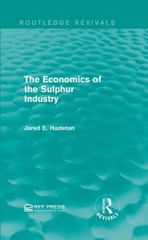hey,,, someone to give me brief explanation please
Question 6 What is the key feature of a prisoners' dilemma game? a) A game where neither player has a dominant strategy. b) A game where each player would have a better payoff if each adopted their non- dominant strategy rather than their dominant strategy. c) A game where there is no Nash equilibrium. d) A game which applies only to prisoners. Question 7 Which of the following circumstances makes it harder for oligopolists to start engaging in cooperation without agreement a) If their industry has very few firms. b) If entry to their industry is particularly hard. c) If the firms produce strongly differentiated products. d) If demand and input prices are fairly stable. Question 8 Which of the following statements about cheating on agreements is false? a) Each firm may benefit if it alone cheats. b) If two firms repeat their game a known number of times, then threats of punishment will not deter cheating c) If two firms repeat their game an unknown number of times, then threats of punishment may deter cheating. d) With a tit-for-tat strategy, if one firm cheats in one period, the other firm refuses to cooperate indefinitely Question 9 Which of the following statements about price leadership is false? a) Price leadership is a form of tacit collusion. b) With dominant price leadership, the leader in an industry is the biggest firm. c) With barometric price leadership, the leader may change even if the relative size of each firm stays the same. d) Price leadership breaks down if input prices or demand conditions change. Question 10 Which of the following outcomes could not occur in a game with two layers who each have two available strategies? a) A game where only one player has a dominant strategy. b) A game where neither player has a dominant strategy. c) A game where one player has two dominant strategies. d) A game where the combined payoff for the two players is the same with every possible combination of strategies.Question 1 Which of the following statements about industries that are oligopolies is false? a) Firms in these industries may attempt to cooperate. b) Firms in these industries are interdependent. c) The fact that there is more than one firm in an oligopoly means that there are no barriers to entry. d) An oligopoly with two firms is called a duopoly. Question 2 Which of the following statements about duopolists in the Cournot model of oligopoly is false? a) Each firm makes an assumption about how much the other will produce, and sets its own output at the level which will maximize its profit if the other firm behaves as assumed. b) Each firm has a reaction curve showing its chosen output for different outputs that the other might set. c) The equilibrium is where the reaction curves intersect. d) If the duopolists produce homogeneous products, then the equilibrium price will be the same as if the industry had a monopoly. Question 3 Which of the following statements about duopolists in the Bertrand model of oligopoly is false? a) The model assumes one firm is a price leader. b) Each firm makes an assumption about the price that the other will set, and sets its own price at the level which will maximize its profit if the other firm behaves as assumed. c) Each firm has a reaction curve showings its chosen price for different prices that the other might set. d) If the duopolists produce homogeneous products, then the equilibrium price will be the same as would arise if the industry was in perfect competition. Question 4 For which of the following does the kinked-demand curve theory not offer an explanation a) Why an oligopolist's price is what it is. b) Why an oligopolist might find that its sales fell greatly if it raised its price. c) Why an oligopolist might find that its sales increased little if it cut its price. d) Why an oligopolist might not change its price, even if the prices of variable inputs changed








